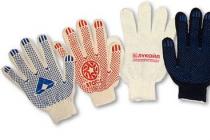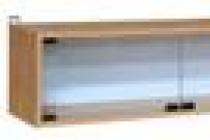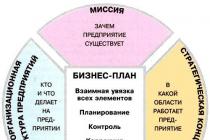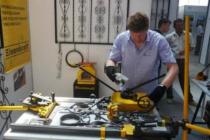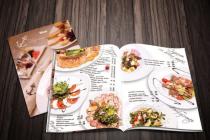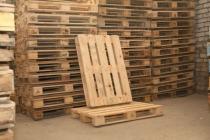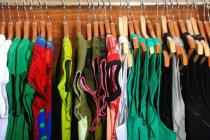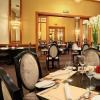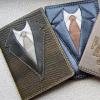The fabric at all times remains the product of the light industry, which does not lose its use. The fabric is produced by a weaving factory. Its organization will require the purchase or rental of premises sufficient to install the entire line. production equipment.
Fundamentals of fabric production
Fabric is made from yarn, which in turn is made from fiber. The quality of the resulting fabric is highly dependent on the characteristics of the fibers.
Fibers are divided into natural and chemical, originating from natural raw materials or obtained as a result of chemical synthesis, for example, polymer fibers.
The whole technology is conditionally divided into three stages:
- Spinning;
- Weaving;
- Finishing.
Spinning
The basis of textile production is spinning. This is a process that results in a long thread - a yarn woven from short fibers. This production process is carried out on a spinning machine.
The fibers produced by the factory are usually compressed into small bales. Then they are loosened and shaken on the appropriate machines, while simultaneously being cleaned of debris. The scutching machine produces a canvas from the threads, which is rolled up.
The resulting web is then passed through scratching surfaces covered with fine metal needles. At the exit, after carding, a tape is obtained, which must be aligned on a draw frame, and then slightly twisted on a roving and twisting machine. After these operations, a roving is obtained.

On a spinning machine, the roving is leveled and pulled out, then wound onto bobbins. The spinning machine for the production of fabrics is operated by spinners. Their duties include repairing yarn and roving breaks, changing bobbins and maintaining equipment.
Made from yarn:
- jersey;
- sewing threads;
- non-woven and woven materials.
Synthetic yarn
For synthetic fabric production, a more complex technology system. Liquid and viscous spinning mass is obtained from the initial components. It enters a spinning machine designed specifically for processing synthetic fibres.
The fibers are formed using special spinnerets - this is a small cap made of metal, inside of which there are many small holes. With the help of pumps, the mass enters the die and flows out through small holes. The flowing streams are treated with special solutions for solidification.
The creation of a synthetic fiber is at the same time the spinning of this fiber. Depending on what the fabric is intended for and what quality is required, the number of threads twisted into one is calculated. After finishing, the threads are wound on bobbins and sent to weaving.

Weaving
The direct process of producing fabric from yarn is called weaving. Equipment for the production of this stage It is serviced by weavers who can serve up to fifty automatic looms.
By car mechanical type the weaver replaces empty spools, eliminates thread breaks. The employee must know the requirements for the quality of the fabric, the parameters of the defective fabric and the reasons for the appearance of marriage, measures to prevent and eliminate marriage. When the weaver has started the loom, it begins to combine yarn into a woven fabric, which is the output.
Threads and weaves
There are transverse and lobar threads intertwined in different ways. Shared threads are directed along the canvases, as they are thinner and stronger. The transverse threads are thicker, shorter, tend to stretch.

The fabric obtained on a loom is called gray. Threads woven from fibers of different colors are called melange. A fabric made of melange threads is called similarly. But if threads with different colors were used to produce a woven fabric, the fabric is called multicolored.
The properties of the future fabric depend on the type of weave:
- Large-patterned weave - jacquard;
- Complex weave - pile, pique, openwork, loop, double;
- Simply weave - twill, satin, plain, satin, crepe and diagonal.
Finely patterned weaves are made on a single-shuttle automatic loom. Multi-colored and complex weaves - on a multi-shuttle automatic weaving machine, large-patterned - on Jacquard looms.
How fabric is made
Fabric finishing
Finishing is the last stage of production. It improves the quality and properties of the fabric, gives it a marketable appearance and strength, depending on what processes the finishing implies.
Finishing can be done:
- napping;
- bleaching;
- mercerization;
- singeing;
- boiling.
When singeing, protruding fibers are removed from the surface of a harsh canvas. Desizing involves soaking the fabric to remove dressing - impregnation applied during weaving.
Boiling removes any impurities from the canvas, and mercerization adds shine, strength and hygroscopicity by washing. When bleaching, the canvas is discolored, and when piled, it is given softness.

Final finishing
The final finishing includes such processes as:
- calendering;
- broadening;
- dressing.
Calendering involves smoothing the canvas, broadening - aligning it to a standard width, dressing - applying starch for density, whiteness for bleaching, or wax or oil for shine.
Equipment
Fabric production requires a fairly rich production line. Consider the main types of production equipment, without which the manufacture of woven products cannot be launched.
Loom
Designed for the manufacture of woven fabric, it can be shuttleless and shuttle, round and flat, wide and narrow. Weaving looms are selected depending on what kind of fabric needs to be produced: linen, silk, cotton or wool.

Special equipment for working with a loom that produces decorative and patterned fabrics, carpets and other carpet products.

sizing machine
Impregnates fabrics with a sticky solution called dressing. This is necessary for the production of wear-resistant and special fabrics, for example, for workwear.

rolling machine
It is used to roll the resulting fabric into a roll or reel using an automatically rotating roller. A properly maintained winder works more efficiently than manual winding of the fabric by weavers, especially on a production scale.

Dye line and printing machines
Allows you to dye fabrics with natural or synthetic dyes. The printing machine applies color prints with paint or dissolves the screen design on the finished dyed fabric.

Washing and measuring machines
The washing machine washes and dries the woven fabrics after printing or dyeing, and the measuring equipment is used to check the quality of the finished woven product, its length, width, density.

Scutching and cleaning and shaking machines
Used in the processing of flax fiber to obtain shorter fibers. Shaking machines loosen the short fiber and give it a marketable appearance.

Carding and spinning machines
The carding machine processes the flax fiber and makes ribbons out of it, and the spinning machine makes it possible to obtain yarn with the required strength. The spinning machine can be spindle or spindleless, the first, in turn, is divided into weft and main.
This is just the main line of equipment, you may also need:
- flax cottoning lines;
- scutching machines;
- squeezing and drying machines;
- wool washing and cotton processing devices.
It depends on the direction of the enterprise.
Video: Cotton, linen, hemp - features of the production of natural fabrics
Ministry of Education and Science of Russia
federal agency of Education
Kostroma State Technological University
COURSE WORK
Technology of textile production
Student: Bugrova E.V.
Group: 08-E-4
Scientific director: prof. Krotov V.N.
Kostroma 2010
Introduction
1. Choice and justification of the scheme production process receiving yarn
2. Equipment characteristics
Flax machine Ch-302-L
Automatic spreading machine AR-500-L
Tape distillation machine LP-500-L
Tape machine LCH-2-L1
Tape machine LCH-5-L1
Dry spinning machine PS-100-L1
3. Drawing up an approximate coordination table
4. Calculation of the updated coordination table.
5. Calculation of equipment performance.
6. Calculation of the output of semi-finished products and yarn. Calculation of the coefficient of operating equipment (KRO) and the coefficient of coordination
7. Coordination of equipment between workshops. Calculation of the capacity of the site
8. Calculation of the main technical and economic indicators of the site
Bibliography.
Introduction
The textile industry is one of the most important industries production. It is this branch of the economy that produces the basic necessities for the population - fabrics, knitwear and those woven materials that are mainly used for the production of clothing and meet the needs of other industries in textile materials used for technical purposes.
If the total volume of production in 1989 was 40.3 billion m 2 of fabric, then at present the volume of production has decreased eight times compared to 1990 production staff decreased three times. This led to a significant decline in labor productivity and an equally significant decline in production.
By 1996, there was a five-fold decrease in the production of all tissues, during the following three years- Stabilization at this low level, some growth until 2001 and stabilization of tissue production until 2004 at about 33-35% of the 1990 level.
In 2004, Russia produced 2 billion square meters. m of fabrics of all kinds. Moreover, the leading industry in terms of fabric production, as in years, is cotton (87%), linen fabrics account for only 6%. In general, the production of fabrics in Russia in 2004 fell by 4.5% compared to 2003.
Today, the industry employs about 3,000 medium and large joint-stock companies, of which almost only a few have switched to organizational schemes that are effective in market conditions management. Basically, these are large factories with a fleet of 1000 machines or more and are not able to quickly respond to market demands. The narrow specification of factories by type of product and type of fiber does not allow them to successfully adapt to trends in demand and fashion. According to an experimental assessment, up to 90% of textile enterprises have the potential to increase work efficiency by 20-25%% by changing the enterprise management system, creating an effective financial and economic system and retraining management personnel.
The common problem of the vast majority of enterprises is the low competitiveness of their products due to their high cost. At the same time, without solving this problem, our textile industry has no prospects. Therefore, the strategic direction of the development of the industry now seems to be its technological modernization.
Low rates of equipping factories modern equipment show that domestic financial and industrial companies do not have sufficient resources to re-equip factories at an accelerated pace, and the Russian government does not include the textile industry in the priority sectors, which it intends to finance. But this level of development of the textile industry will not allow, without extensive technical re-equipment of factories, to continue to produce under conditions open market competitive products.
International trade Russian linen fabrics as a whole is characterized by a slow growth rate of exports and a decrease in imports. Thus, in 2004, imports exceeded exports by 22%. The export of linen fabrics exceeds their import in value by almost five times.
The state of the textile industry in 2004 is as follows:
The level and condition of the equipment, with a few exceptions, remain at a low level. Over the past years, the equipment of Russian factories, mostly outdated before, has aged another 15 years;
The range and quality of fabrics have partially changed in better side, because factories have to sell fabrics in competition with imports. However, there remains a need for further improvement;
Usage information technologies for the management of production and the technological process in advanced factories has improved markedly along with the improvement of the computerization of the whole country;
The structure of giant factories is improving, they are being disaggregated, which makes it possible to improve product quality and reduce production costs;
The structure of manufactured products began to improve;
The narrow specialization of factories in terms of fibers and groups of fabrics has been eroded in recent years. Factories are equipped sewing shops. This allows them to better adapt to market demands;
The use of synthetic fibers, if necessary and possible, is increasing, because free market synthetic fibers and threads.
According to the World Economic Forum in the period from 1999 to 2003. Russia ranked from 59 to 65 out of 80 countries evaluated.
Thus, the investment climate existing in Russia cannot be called favorable. it does not guarantee investors equal opportunities for healthy competition with the goods of foreign firms.
The possibility of the textile industry getting out of its current state, first of all, depends on the accelerated improvement of legal and economic conditions its functioning.
1. Selection and justification of the scheme of the production process for obtaining yarn
Warehouse of raw materials and preparation of ragged flax for combing.
In the warehouse of raw materials, ragged flax is prepared for combing. In the process of combing ragged flax, two types of flax fiber are obtained: combed flax and tow. Combed flax is 2-3 times more expensive than combed flax, so from the very first stages of processing, it is necessary to carefully monitor the output of combed flax.
Worn flax in the form of densely pressed bales to the factory. Each bale consists of packs of handfuls of tattered flax. Inside the bale there may be handfuls of tattered flax, differing in color and even in number. Therefore, the preparation of ragged flax begins with careful sorting.
Careful sorting of ragged flax.
It is better to carry out it in a raw material warehouse, preparing large batches of fiber of the same properties.
emulsification.
Application of liquid fat emulsions to the fiber (performed manually). The composition of emulsions includes: water (80-85%), mineral oil, soda, kerosene. Emulsification gives the fiber softness, flexibility, elasticity. This increases the humidity, which reduces the emission of dust and reduces the electrification of the fiber.
Bedtime.
The process of aging the fiber in storage for 24 hours. During this time, the fiber is evenly impregnated with the emulsion, and the previously accumulated mechanical stresses and electrostatic charges are removed from it. The duration of the stay must be monitored. If the spinning process is less, the spinning process will go worse, while the fiber is rotting.
Division into handfuls.
To optimize the carding process, each handful of fiber must have a certain weight. The higher the fiber number, the larger the handful should be. Usually the mass of a handful is p = 110-130 g.
Frame, or trim.
This is a manual operation. It is carried out on hand combs and only for high numbers of ragged flax (the efficiency increases, the percentage of combed flax increases).
From the warehouse of raw materials, handfuls of ragged flax go to the flax machine Ch-302-L.
2. Equipment characteristics
Flax machine Ch-302-L
Purpose: Serves for scratching handfuls of ragged flax.
Processes:
1. Straightening and parallelization of a long fiber.
2. Crushing of thick technical fibers into thinner ones (in the longitudinal direction).
3. Cleaning the fiber from fire, dust and very short non-spun fibers.
4. Careful sorting of the fibers into long, thin, strong (combed linen) and short, tangled, weaker fibers (tow).
Advantages of flax machine Ch-302-L:
1. It turns out high quality combed linen.
2. Comparatively high level automation (mechanical automation).
Machine disadvantages:
1. The output of combed flax is small.
2. Low performance.
3. Large overall dimensions.
4. Manual monotonous work.
5. Not very favorable working conditions.
General technical specifications Ch-302-L
Number of working transitions 16
Number of ridges around the circumference of the blade 24
Length, mm
comb 305
pads 302
combed sheets around the perimeter 1625
Comb height (needle length), mm 28
Number of pads on the machine 55
The speed of the combed cloths, m/min 13.2-25
Carriage lifting height, mm 500-700
Frequency of carriage lifts per minute 8-10
Machine weight, kg 18900
Overall dimensions, mm
width 4300
height 3230
The Ch-302-L flax comber is aggregated with the AR-500-L automatic spreader.
The choice of a method for shaping a suit largely depends on the type of material and its fibrous composition. Many have been developed modern materials, allowing you to create a complex shape and various effects. The expansion of the range and the increase in the production of textile fibers are carried out in several directions:
improvement of fiber properties for a wide range of applications due to their modification - increasing comfort and mechanical properties;
creation of superfibers with special properties for a narrower purpose (superstrong, superelastic, ultrathin, etc.);
creation of interactive fibers that actively "respond" to changing external conditions (heat, lighting, mechanical impact, etc.);
development of new technologies for the production of synthetic fibers from renewable (natural) raw materials in order to reduce dependence on declining oil and gas reserves;
the use of biotechnologies for the synthesis of new types of fiber-forming polymers and the improvement of the quality of natural fibers.
A widely used method aimed at changing and improving the properties of fibers is their modification. There are various ways to physically and chemically modify fibers. One of the directions of the physical (structural) modification of fibers is the profiling of fibers is achieved by using spinnerets with holes of various shapes during their formation: a triangle, a trefoil, a multi-beam sprocket, a double rhombus, slits of various configurations, etc. This method of modifying the surface of the fibers imparts roughness and increased tenacity. Due to this, threads and materials from such fibers acquire increased volume and porosity.
Methods for obtaining multilayer fibers (up to 100 film layers) have been developed in the USA and Japan. Such fibers are able to change brilliance and color hues and saturation when changing lighting or angle of view, and even have a holographic effect.
Segment-type bicomponent fibers made of non-shrinkable polymers after heat treatment acquire a stable crimp, reaching 100%. Combined fibers can be obtained by depositing various polymers from solutions or melts on the finished fiber (substrate), forming a "shirt" of any thickness on its surface. In particular, fusible layers of a binder polymer used to produce nonwoven materials are deposited on the surface of cellulose and chemical fibers.
In recent decades, one of the main directions for improving and improving the quality of chemical fibers has been the creation of ultra-thin fibers [Buzov, Alymenko-va, 2004], which make it possible to create a certain texture (surface) of the material: the “peach skin” effect, suede-like surface, velvety, soft silky surface , approaching the carcass of natural silk. Fibers and materials that are “pleasant”, pleasant for all senses in foreign special literature are called “high-touch”.
1. Definition of the term "suit tectonics".
2. Types of tectonic systems of the suit.
3. Distinctive features tectonic systems of the suit.
4. Ways of shaping the shell systems of the suit.
5. Examples of frame systems in a suit.
6. The system of connections between the elements of the costume form.
7. Factors affecting the ability of fabrics to form.
8. Methods for the formation and fixation of the shape of clothing details.
9. Ways to expand the range of textile fibers.
10. New textile fibers and materials.
The post has been changed:
fabric business
Textile production is a highly demanded line of business. The scope of textiles is very diverse. Popular areas of its application:
- production of clothes: home, casual, elegant sportswear for adults and children, overalls;
- production of accessories: scarves, bags, wallets;
- interior and design: furniture manufacturing, curtains, curtains, tablecloths;
- home textiles: bed linen, blankets, towels, pot holders.
Brief business analysis:
Business setup costs: from 3 million rubles
Relevant for cities with a population:from 700 thousand people
Situation in the industry:high competition
The complexity of organizing a business: 4/5
Payback: up to 2 years
There are also other areas, such as the production of materials for tourist equipment (tents, sleeping bags, etc.), the production of decorative fabrics and fabrics for needlework. There are fewer customers in this area, so the role of marketing and sales is increasing in order to interest potential partners and convince them to start cooperation.
Business Outlook
Due to the economic and political events that have taken place since the late 80s of the last century, this segment of production in Russia has been practically destroyed. To date, most of the fabrics are imported from abroad - both legally and counterfeited.
However, for the domestic market, the situation is changing for the better. According to experts, the production of fabrics in our country is a potentially promising niche. With a competent business plan and skillful management, an enterprise can quickly pay off and bring good profit. The demand for fabrics is high and continues to grow, while people are interested in both the budget segment and expensive high-quality fabrics with an interesting design.

Companies producing textiles for bed linen- coarse calico, chintz, poplin. A large share of the market is also occupied by enterprises producing knitwear, suit fabrics and cloth.
Particularly promising, according to experts, is the production of furniture fabrics, as this market segment is actively developing and the demand for high-quality materials is very high.
The market for the production of clothing in our country is also quite diverse, but import manufacturers, primarily China, make up a lot of competition here. Nevertheless, practice shows that in this area there is also a constant search for quality goods with unusual characteristics - pattern or texture. Therefore, those who can satisfy consumer demand have every chance of success.
Business organization
Before starting production, you need to carefully familiarize yourself with the market and assortment. It is desirable to have a good understanding of the types of fabric, to understand the technological processes.
The entrepreneur must imagine what kind of fabric he wants to produce, what niche in the market to occupy and through what channels to sell.
Workshop room
The premises can be purchased or leased. It is also possible to negotiate with the existing enterprise and place orders for production with them.
The last option involves the development of your own fabric design and the purchase of raw materials, on the basis of which the manufacturing factory will produce the fabric. In this case, there are no costs associated with the acquisition industrial premises, purchase and maintenance of equipment, a small staff will reduce labor costs. But the ability to control the process and the quality of the final product is reduced. This scheme of work increases the cost of logistics, so if the factory is located remotely, it may turn out to be unprofitable.

The area of the enterprise depends on the planned volumes of output. It is necessary to remember the compliance with sanitary and hygienic standards. The room should be well lit, the ceiling height should be at least 4 m. It will be necessary to provide good ventilation, in the cold season - heating.
For the comfort of workers, changing rooms with showers and a place to eat are needed. To ensure fire safety and uninterrupted operation of the equipment, it is necessary to take care of high-quality wiring. For the convenience of loading and unloading operations, an equipped area will be required, if possible, an auto ramp.
In addition to the workshop, dry warehouses will be required to store raw materials and finished products as well as office space.
Practice shows that it is more convenient to locate production near the exit from the city or just outside the city limits. Typically, large-sized vehicles are used in logistics, so this location of the enterprise will speed up their movement and will not cause parking difficulties if the organization has several vehicles in its fleet.
Raw material supply channels
Depending on the raw materials used, fabrics are divided into two large groups:
- natural (wool, silk, linen, cotton);
- artificial (viscose, polyester, acetate).
Hence the most promising types of fabrics for production:
- cotton;
- linen;
- woolen;
- polyester;
- technical.
Two types of natural raw materials are produced in Russia: flax and wool. Deliveries must be negotiated agriculture dealing with them industrial production. As for cotton, its production in our country is practically absent. Historically, Uzbekistan was the main supplier of this raw material in the Soviet Union, today it also continues to be the world's leading supplier of cotton.

China is the world's largest silk producer. It is also produced in India and Uzbekistan. To date silk fabrics and silk products are presented mainly in the premium and luxury price segments. There is a drop in demand for these fabrics not only in Russia, but also in the world. Therefore, its use in the manufacture of fabrics requires a well-thought-out business plan with well-established distribution channels.
The situation is much simpler with synthetic fibers: many enterprises are engaged in their production, and the development of technologies makes it possible to modify and improve the range.
When purchasing foreign raw materials at the initial stage, it is more convenient to work with dealers. This will allow you to purchase goods from a warehouse in Russia without waiting for international delivery and customs clearance.
Fabric production technology
Technological process has its own nuances depending on the type and desired characteristics of the fabric. The general algorithm looks like this:
| production stage | What are they doing on it |
|---|---|
| Raw material pretreatment | Compressed bales received for production are loosened and divided into fibers by scutching and combing |
| Getting yarn | From the resulting fibers weave a thin long thread - yarn |
| Fabric Creation | The resulting threads are intertwined with each other in a certain order to obtain a continuous web. |
| Fabric processing | To give the fabric the desired properties, it is subjected to special processing. At the same stage, the drawing and fixing of the drawing takes place. |

Necessary equipment
When starting a business on the basis of existing production facilities, it is necessary to assess the condition of the equipment. The equipment in many factories is outdated, which will inevitably affect the quality of the finished product. Therefore, it is not worth saving on equipment.
The specific machines included in the production line depend on the raw materials used and the final destination of the fabrics. The production of cotton, wool or synthetics involves different technological processes. Upholstery fabrics require more complex weaving and processing than bedding fabrics.
| Machines used in production | Operations in progress |
|---|---|
| winding machines | Used for winding yarn |
| Loom | Weaves threads to create a web |
| sizing machine | Impregnates fabrics with a special solution to increase the wear resistance of the fabric |
| rolling machine | Rolls the fabric |
| Dyeing and printing machines | Fabrics are dyed and prints are applied to them |
| washing machine | Removes paint residue from fabric |
| Checking and measuring machine | With its help, they monitor the compliance of the finished fabric with standards. |
Also, depending on the chosen specialization, separate equipment will be required: a spinning machine will be needed for processing wool, a carding machine for working with flax.

Business registration
To design production, the manager must select legal form on which he will work - IP, LLC, Joint-Stock Company. In addition, it is mandatory to obtain a certificate for the products. Failure to do so will result in serious penalties for the company.
Marketing and distribution channels
The production of fabrics is focused on large and small wholesale. Distribution channels depend on the chosen direction, but they can be conditionally divided into manufacturers who buy fabric for further processing and manufacturing of the final product, and dealers who buy it for resale in smaller lots.
The retail buyer is not always represented in the factory's distribution channels, because it is unprofitable to sell the fabric by the meter and store the leftovers for the manufacturer. However, you can use this direction for the sale of goods by opening a retail store at the factory.

Another direction for the development of production and a way to expand target audience- production from fabrics own production products under your own brand. This direction is not suitable for all types of fabrics; it is easiest to implement it in the production of home textiles - bed linen and towels.
Export of fabrics is also possible. On this moment largest share falls on linen fabrics. However, practice shows a constant decline in exports, so it is quite risky to rely on it.
Finally, you can choose a target niche: for example, fabrics for sewing uniforms or workwear. Tenders are often held in these areas or bids are made for large deliveries.
Marketing
Marketing strategies are based on search regular customers. It must be understood that the bulk of sales, most likely, will be conducted remotely. At the same time, potential clients there are already other suppliers and the budget is planned. Therefore, it makes sense to think over and launch a marketing campaign immediately, when opening a business, so that by the time the product is launched, there will be a real sales opportunity. This will avoid packing, reduce the cost by reducing the shelf life and pay back the costs faster.
Promotion methods:
- An opportunity to express yourself and establish business contacts are the annual specialized exhibitions. The largest and most famous of them, for example, Tekstillegprom and Interkan, are held twice a year in Moscow. There are also regional exhibitions. They are less representative, but participation in them is more budgetary. The bonus of a trip to such events will be the opportunity to find new suppliers of raw materials working on favorable terms.
- Product promotion is impossible without the World Wide Web. The company must have not only a high-quality website, but also post information on thematic sites. contextual advertising has become less effective in recent years due to the ubiquity of blockers, but this way of informing yourself also deserves attention.
- There is no point in submitting information to the newspapers to the manufacturer. But paying for placement in thematic magazines and booklets is worth it.
- Since the search for customers takes place remotely, and the fabric, as a product, needs a tactile assessment, it is necessary to prepare product samples for free presentation and distribution to customers. For the same purposes, it is convenient to order catalogs, since many customers subsequently place orders for them according to the requirements of the end buyer.
- Cold calling as a way to find new customers is still popular. This method is more focused on the long term and allows, first of all, to expand the base of potential customers for further work of managers.

Business costs and payback
The investment required at the initial stage depends on the availability of equipment and its condition. Experts say that it is often easier to buy new cars than to upgrade outdated equipment. At the same time, it is recommended to buy the production line as a whole, and not in parts.
The costs are affected by the raw materials used, and the condition of the selected premises, and the estimated production volumes, on which the size of the staff depends, among other things.
At the initial stage, at least 3 million rubles will be required. An approximate cost estimate for the production of one type of fabric with a staff of no more than 25 people includes:
| Expenses | Approximate amount, thousand rubles |
|---|---|
| Business registration | 50 |
| Rental of industrial premises | 100 |
| Purchase or upgrade of equipment | 1500 |
| Equipment for industrial and office premises | 500 |
| Purchase of raw materials | 200 |
| Staff salary | 500 |
| Promotion activities: participation in exhibitions, advertising, etc. | 100 |
| Logistics | 50 |
| Communal payments | 20 |
| Unforeseen costs | 100 |
| Total | 3120 |
You should also consider taxes. This item is not included in the table of expenses, since the amounts differ greatly from profit and the chosen taxation scheme.
Payback depends on production volumes and fabric prices. Prices, in turn, depend on the type of fabric: calico for bed linen will be cheaper than furniture fabrics, natural wool is more expensive than polyester. On average, with well-established distribution channels and the absence of serious contingencies, investments will pay off in two years.
Fabric production process from thread to counter

